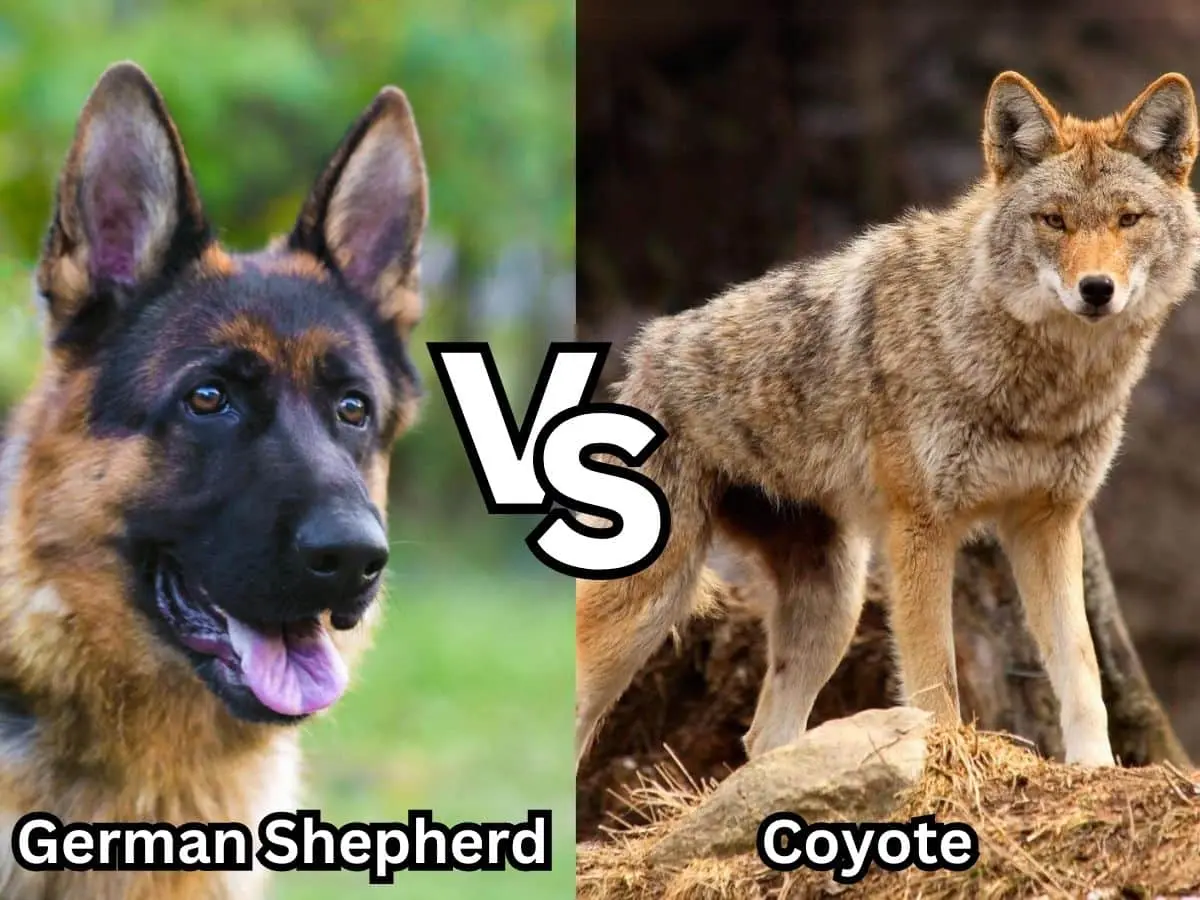Coyote vs German Shepherd
Regarding the animal kingdom, one of the most intriguing matchups is between the coyote and the German Shepherd. These two species share some similarities but also have significant differences. This article will delve into German shepherd vs coyote details, examining their physical characteristics, behaviors, and interactions.
Physical Characteristics of Coyote Vs German Shepherd
Size and Build
German Shepherds are generally larger and heavier than coyotes. Male German Shepherds can range from 22 to 26 inches at the shoulder and weigh between 50 to 90 pounds. On the other hand, coyotes stand about 21 to 26 inches tall at the shoulder and weigh anywhere from 15 to 55 pounds.
For more details about Size then click here Coyote vs German Shepherd Size
Color Difference
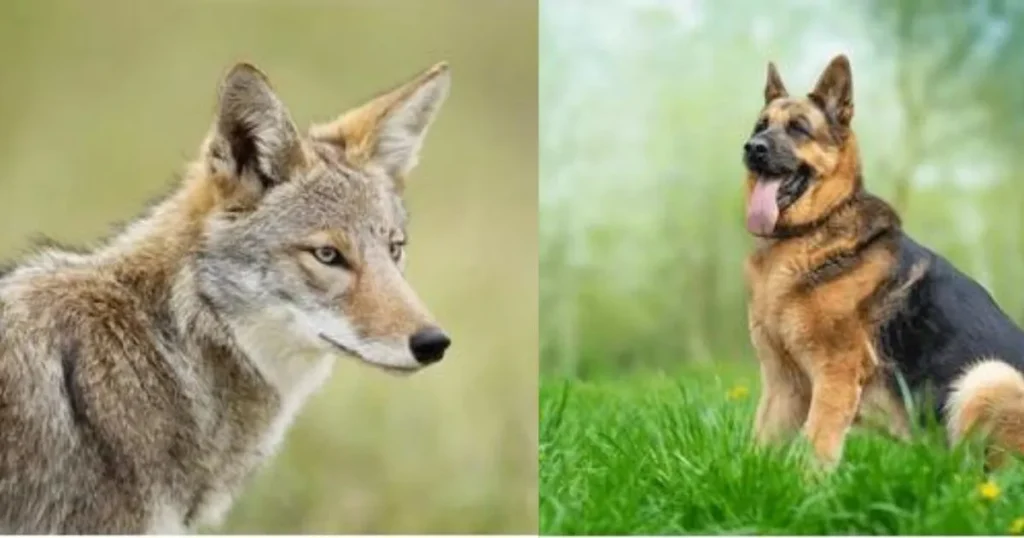
German Shepherds are commonly black and tan, a color not found in coyotes. Coyotes usually have a dark gray neck, chin, and belly. Interestingly, both species can be black, and there are rare instances of white German Shepherds, a color not seen in coyotes.
German Shepherds come in many different colors. The most common ones are solid black, ebony, and black with a tan. The coats of German Shepherds may also be a combination of the colors. These animals’ backs are patterned in a unique saddle shape, with lighter fur at the edges and darker fur near the spine.
Coyotes, on the other hand, have fur that is usually gray or tawny. The shade can be different depending on the area and habitat. Coyotes’ fur can also be a combination of whites, grays, or browns. This allows them to blend in with different surroundings. Coyotes are more evenly colored than German Shepherds.
| Characteristic | German Shepherd | Coyote |
|---|---|---|
| Common Colors | Black and tan, sable, solid black, others | Gray, tawny, mixture of grays and browns |
| Coat Patterns | May vary in shade depending on the habitat | Generally uniform coloration |
| Variations | Various combinations of black, tan, and sable | May vary in shade depending on habitat |
| Camouflage Ability | Slightly less effective due to distinct patterns | Highly effective due to blended colors |
| Regional Differences | Appearance can vary based on breeding lines | Fur color can adapt to local habitat |
Tail Shape and Position
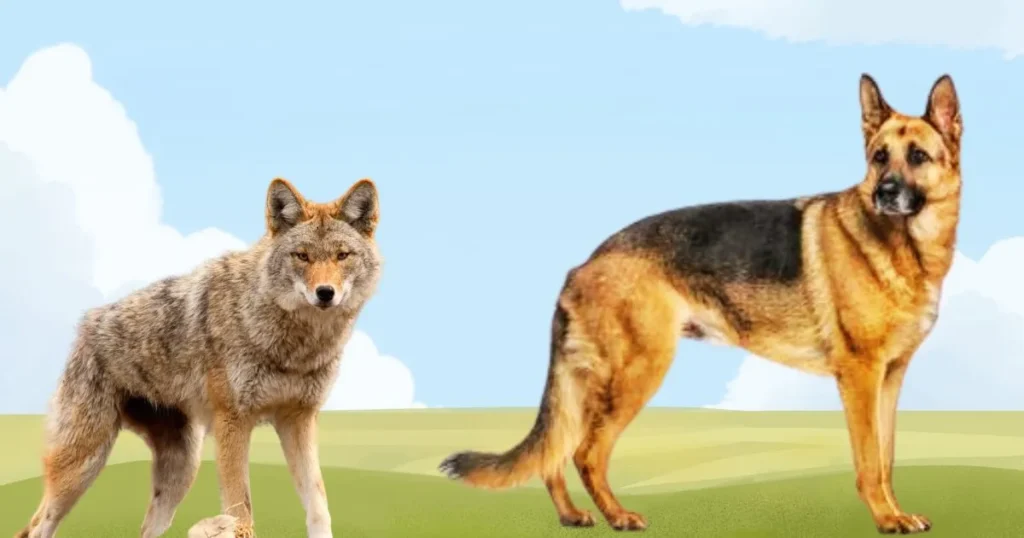
German Shepherd
Tail shape: German Shepherds are known for their long and bushy, straight or slightly bent tails. Fur is thickly covering the tail, which gives it an appearance of fullness.
Tail position: A German Shepherd’s tail will hang down naturally and beyond the hock. When the dog is alert or excited, its tail will be higher. However, it usually remains in a relaxed, unraised position.
Coyote
Tail shape: Coyotes’ tails are longer and more slender than those of German Shepherds. They have tails that are typically less bushy. Their ends may also appear to be more tapered.
Tail position: Coyote tails can be positioned in different ways depending on their mood and activities. In relaxed states, the tail usually hangs between the legs or even downward. In moments of aggression or excitement, the tail will be raised. It may even curl slightly upward.
Legs and Tracks
Coyotes appear to have longer legs than German Shepherds, although the leg lengths are similar. German Shepherds in North America often have unusually shaped hind legs, giving them a permanent crouch appearance. In contrast, coyote backbones are more level from neck to tail.
Running Style
German Shepherd Running Style
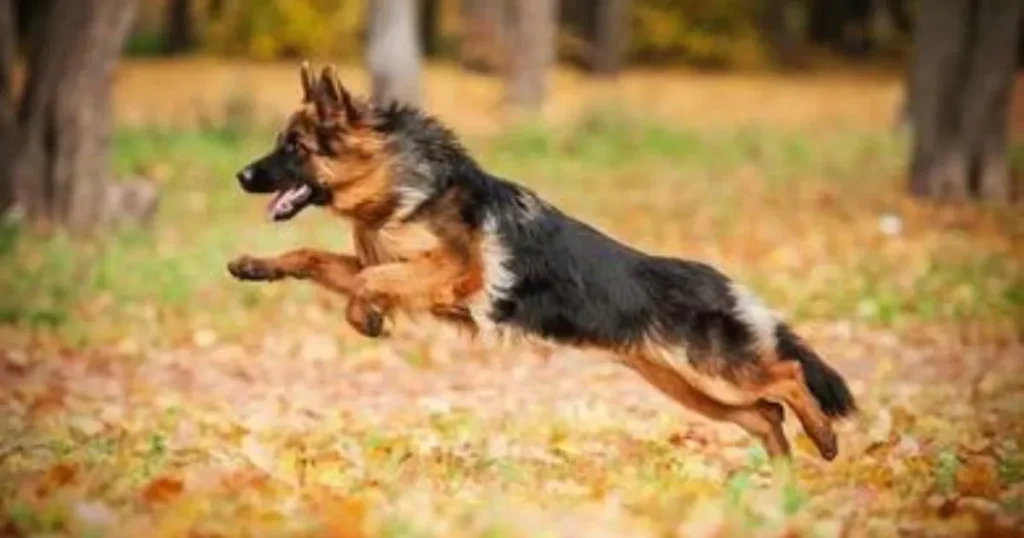
- German Shepherds have a muscular build with a sleek body and strong legs.
- When running, they usually trot, which allows them to cover long distances efficiently. They can maintain their pace with this gait without having to exert excessive energy.
- German Shepherds are also able to sprint at times, particularly when chasing after a ball or prey.
- They can run on different terrains and do so with speed, agility, and agility.
Coyote Running Style
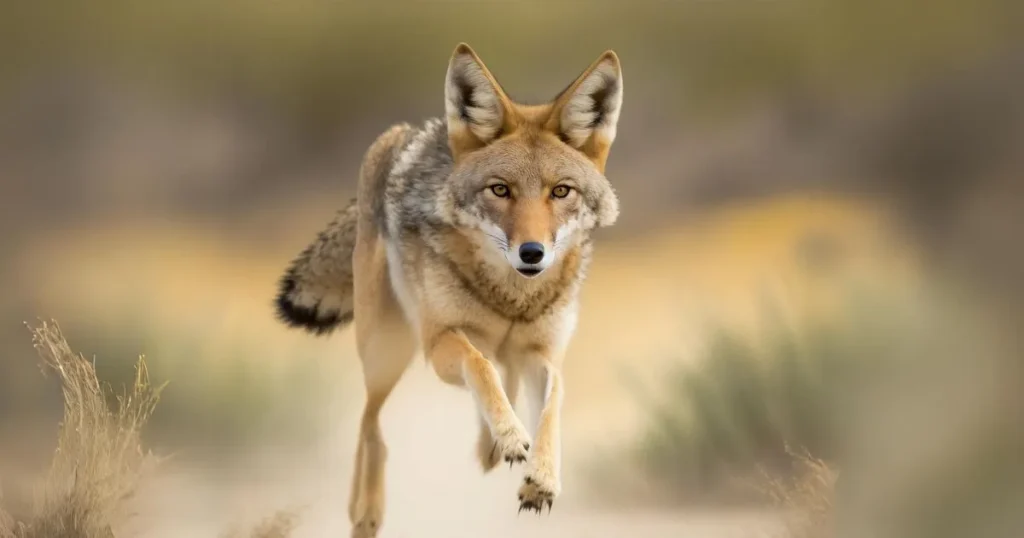
- Wild canines and coyotes have a reputation for adapting to different environments and being agile.
- The body is lean and lithe, designed for long-distance running as well as quick sprints.
- When running, Coyotes use a gait called “loping” or “boing,” which is characterized by strong leaps and fast movements.
- They can hunt in a variety of terrains, from flat fields to rough landscapes.
- Coyotes can change directions quickly while they are running. This makes them excellent hunters.
Behavior and Interaction of Coyote Vs German Shepherd
Territorial Instincts
Both German Shepherds and coyotes are territorial animals. German Shepherds are very protective and will guard their space. Similarly, coyotes are also territorial and often encroach on German Shepherd territory, but they don’t attack unless necessary.
Confrontation and Fight
A fight between a coyote and a German Shepherd is not very likely to happen, as coyotes usually avoid confrontation. However, if a coyote invades a German Shepherd’s territory, the dog may defend itself out of its protective instinct. A German Shepherd has a larger body and a stronger bite force than a coyote, and could potentially kill it by breaking its bones.
You may like this
Conclusion
While there are some similarities between German Shepherds and coyotes, they are two distinct species with different physical characteristics and behaviors. Understanding these differences is crucial for pet owners, wildlife enthusiasts, and those living in areas where these animals coexist.
Remember, it’s important to respect all wildlife and keep a safe distance to ensure the safety of both humans and animals. If you own a German Shepherd or live in an area with coyotes, understanding their behaviors can help prevent conflicts and promote peaceful coexistence.

